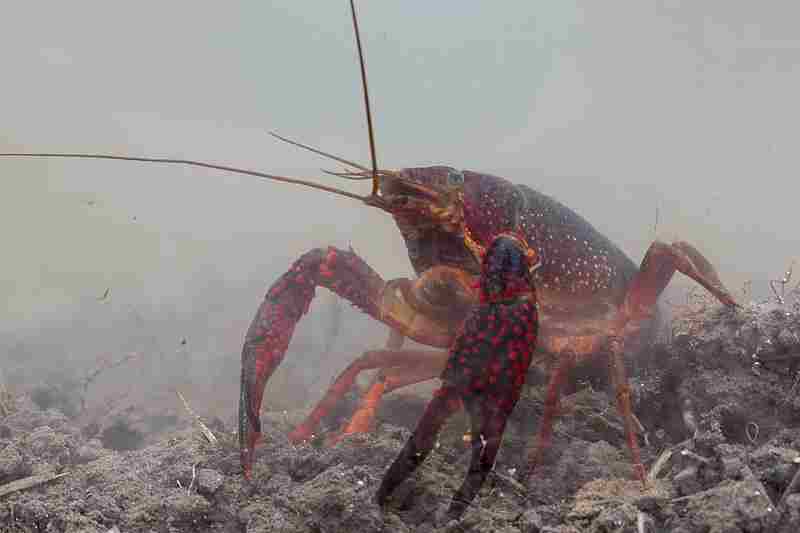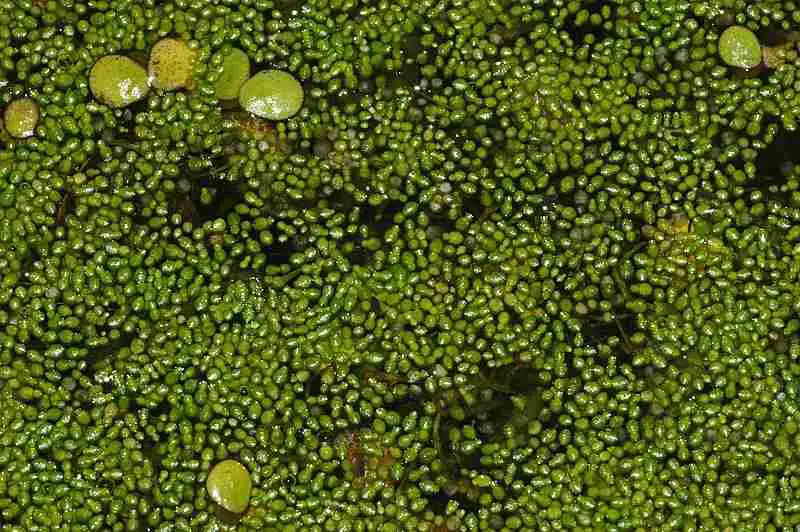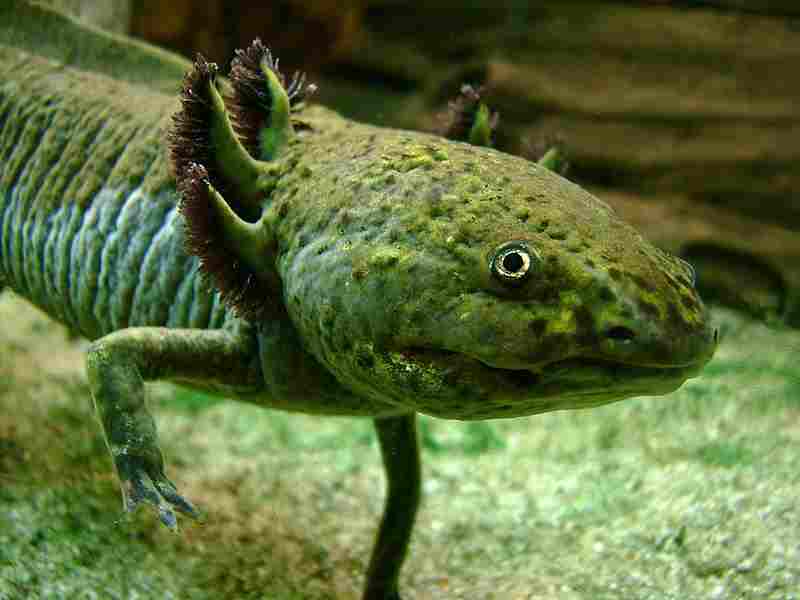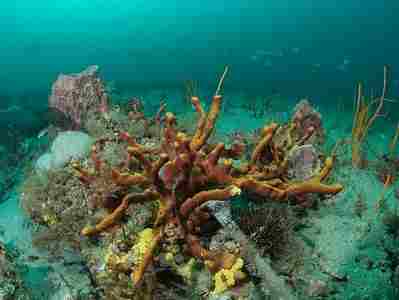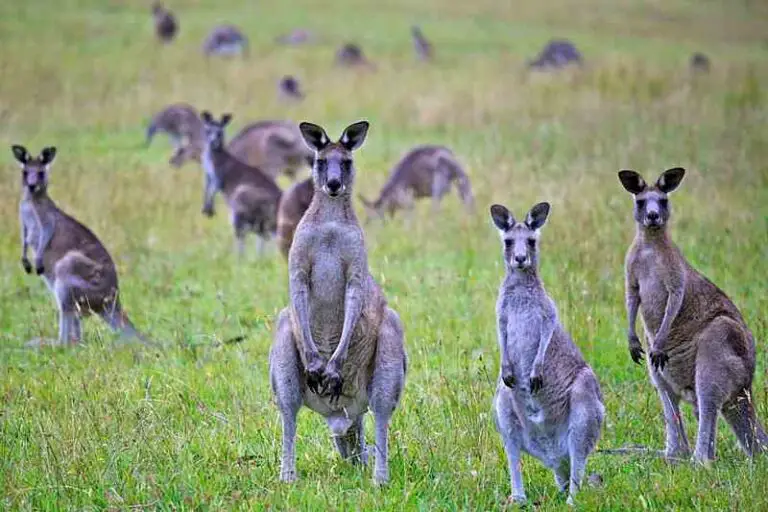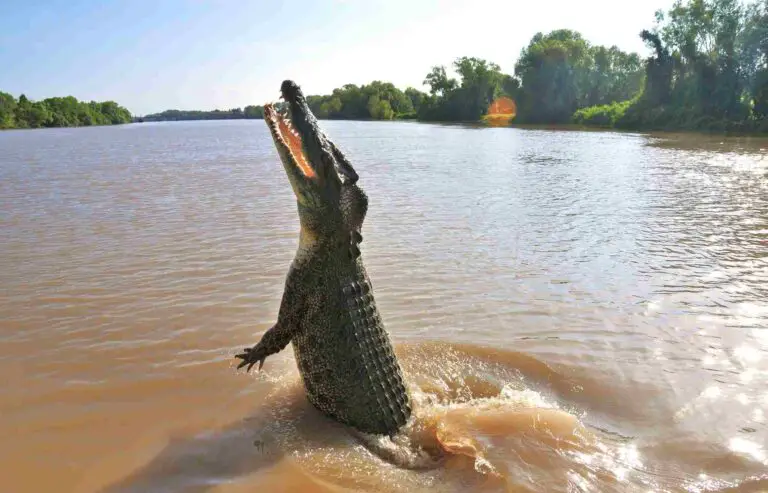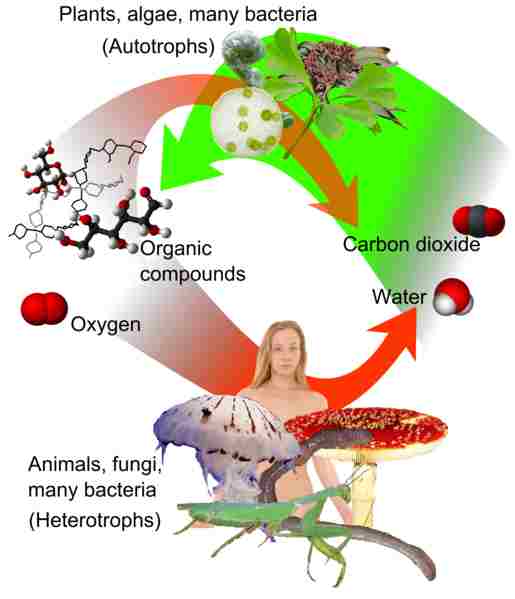Wetland Energy Pyramid Components and Functions
Wetland energy pyramid comprises of producers, primary consumers; secondary consumers, tertiary consumers and the contributions of decomposers to energy dynamics.
This article discusses the wetland energy pyramid in terms of its components and their functions, as follows;
1). Producers: Components of the Wetland Energy Pyramid
Producers in the wetland ecosystem make up the foundation of the food chain/energy pyramid, as they are the primary organisms that convert solar energy into organic biomass through photosynthesis [2]. These producers have a vital function toward energy transfer within their habitat.
Some common wetland producers include; aquatic (vascular and non vascular) plants, green algae, and cyanobacteria.
Aquatic plants, including various species of grasses, reeds; sedges, and submerged complex hydrophytes, are essential wetland producers. They grow in waterlogged soils where they play an effective role in nutrient cycling and habitat provision.
Algae are photosynthetic organisms that are found in both freshwater and saltwater wetlands [6]. They are a significant source of primary production, especially in wetlands with high nutrient levels.
Mosses, including sphagnum peat moss, are often found in bogs and other freshwater wetlands. These non vascular producers contribute to the accumulation of organic matter and recycling of nutrients within these ecosystems.
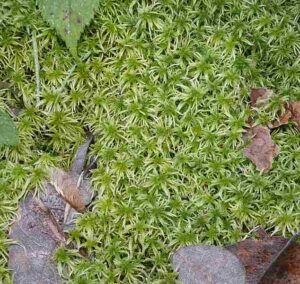
Cyanobacteria, also referred to as blue-green algae, are a group of photosynthetic bacteria that are commonly found in wetland areas. They are capable of fixing or sequestering atmospheric nitrogen, which can contribute to the nutrient content of wetland ecosystems.
Contribution of Wetland Producers to Energy Transfer
Producers in wetlands are autotrophic organisms that capture light energy from the sun and convert it into chemical energy stored in organic compounds like glucose. This mechanism of photosynthesis constitutes the foundation of the wetland food chain, and facilitates the flow of energy through the ecosystem.
An overview of how energy flows in a wetland ecosystem will commence with photosynthesis, and proceed to heterotrophic feeding patterns like herbivory, omnivorous feeding, and predation.
In photosynthesis, wetland producers, such as aquatic plants, peat mosses; and algae, harness solar energy to synthesize organic molecules like carbohydrates, through photosynthesis. These organic compounds serve as a source of energy as well as nutrients for the producers themselves.
Herbivory involves the feeding activities of some insects, mollusks, crustaceans, and mammals like beavers and rabbits, which feed on wetland producers. These organisms obtain their own energy and nutrients by consuming autotrophic material from plants and algae.
Omnivorous feeding is exhibited by some wetland inhabitants, like turtles, racoons and snails. They are able to consume both plant material and animal matter, and create multidirectional pathways for transferring resources through the wetland energy pyramid.
Carnivores in the wetland, such as frogs, alligators and snakes, prey on herbivores and other lower animals. They obtain energy by consuming the biomass of these animals.
At the top of the wetland food chain or energy pyramid are the apex predators, including large alligators or predatory waterbirds such as herons. They consume other animals, including lower-level carnivores, and complete the cycle of energy transfer.
Decomposers, such as fungi and bacteria, break down organic matter, including remains of dead plants and animals, thereby releasing nutrients into the ecosystem. They play an essential role in recycling resources within the wetland.
The energy pyramid of the wetland has a tapering-upward profile because its total resources are maximum at the bottom (where producers occur), and decrease in magnitude progressively as we move up the trophic hierarchy.
This can be explained using the ten percent rule, whereby about ninety percent of the total energy in each level is lost as heat and organic waste, leaving only approximately ten percent to be transferred to the overlying trophic level.
Overview of Wetland Producers and Energy Flow Dynamics
Producers in the wetlands include aquatic plants, algae, cyanobacteria and sphagnum mosses. They form the base of the wetland energy pyramid.
Energy flows in a wetland from producers to herbivores, omnivores, lower carnivores, apex predators, and finally to decomposers. This pattern of flow of energy, leads to sustainability of the entire wetland food web.
2). Primary Consumers in the Wetland Ecosystem
Primary consumers in the wetland ecosystem are generally herbivores that play a critical role in the transfer of energy within their habitat.
These organisms feed on the primary producers, such as algae, aquatic plants, and peat mosses, which capture energy from the sun through photosynthetic processed. By consuming plant/algal material, primary consumers assimilate this energy (and nutrients), and become a vital link to non-herbivorous consumers in the wetland food chain.
Some examples of primary consumers in wetlands include some waterfowl species, aquatic insects, snails, beavers, and herbivorous fish such as mbunas and plecos.
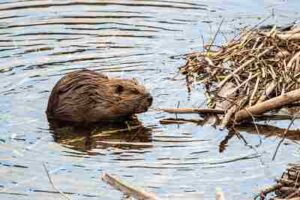
Contribution of Wetland Primary Consumers to Energy Transfer
Primary consumers in wetlands are pivotal in facilitating the flow of energy through the ecosystem. They contribute to energy transfer within their habitat through herbivorous feeding, energy assimilation, transfer, support of higher trophic levels, and nutrient cycling.
Herbivorous feeding occurs when primary consumers feed on plant material within their environment. They obtain energy by breaking down the complex organic molecules, such as cellulosic carbohydrates, present in plants [1].
Through digestion and various metabolic processes, primary consumers assimilate the energy stored in the plants which they consume. This energy is then used to fuel their own growth, reproduction, as well as daily activities.
Energy is transferred in substantial amounts from autotrophic biomass to their own biomass, as primary consumers consume primary producers. This energy is then made available for the next trophic level in the wetland food chain.
Because they are able to feed on autotrophs, primary consumers form the foundation for higher trophic levels, such as secondary consumers (carnivores, omnivores) and tertiary consumers (apex predators). By providing a source of nutrients and energy, primary consumers support the overall species richness and ecological functionality of the wetland ecosystem.
Through their feeding activities and subsequent production of wastes, primary consumers contribute to nutrient cycling within the wetland. Nutrients that are released in their waste can be taken up by plants, thereby completing the nutrient cycle of the wetland ecosystem.
Overview of Wetland Primary Consumers
Primary consumers in wetlands can include waterfowl (like geese, swans and ducks), some aquatic insects, snails, beavers, and other organisms that feed on wetland vegetation or algal matter. It must be noted that some of these organisms may also exhibit occasional omnivorous behavior.
Energy flows in a wetland through both unidirectional and multidirectional pathways, from primary producers (plants and algae) to primary consumers (herbivores), and then to organisms in higher trophic levels; including carnivores and omnivores.
3). Secondary Consumers: Components of the Wetland Energy Pyramid
Secondary consumers in the wetland ecosystem are predominantly carnivorous organisms that are critical in their contribution to energy transfer within their habitat.
These organisms feed mainly on primary consumers, which are typically herbivores that consume primary producers (plants, algae). Secondary consumers occupy a higher trophic level in the wetland food chain (usually trophic level 3), and their dietary components consist mainly of animal biomass from these primary consumers, although some may also consume other secondary consumers.
Examples of secondary consumers in wetlands include carnivorous fish like bichirs and red-bellied piranhas (Pygocentrus nattereri), reptiles, some predatory birds, ladybugs, foxes, beetles, racoons, coyotes, snakes, juvenile alligators, and even some crustaceans like shrimp.
The vast disparity in geneaology and capacity of these animals indicate how diverse the wetland energy pyramid is in terms of its components and transfer pathways. Food for wetland secondary consumers may range from herbivorous arthropods, birds, mammals, and fish, to vulnerable fellow carnivores.
Contribution of Wetland Secondary Consumers to Energy Transfer
Secondary consumers in wetlands contribute significantly to energy transfer within their habitat through processes of carnivorous feeding, energy assimilation, transfer, and diversity maintenance.
Wetland secondary consumers are carnivores that primarily feed on primary consumers, which, in turn, obtain their energy from consuming plants or algae. This implies that secondary consumers acquire energy indirectly from the primary producers below them.
When they feed on primary consumers, secondary consumers break down the organic molecules present in tissues of their prey. This process enables them to assimilate the energy stored in the herbivores which they consume.
A portion of the energy obtained by secondary consumers from primary consumers, is transferred into their own biomass. This energy then becomes available for their metabolic activities and growth.
By reason of their position in the energy pyramid, wetland secondary consumers usually serve as a link between primary consumers and tertiary consumers. When they prey on primary consumers, they regulate herbivore populations (thereby potentially preventing overgrazing [5]) and provide an accessible source of energy for tertiary consumers that prey on them.
Biodiversity in the wetland is supported and maintained by the presence of secondary consumers. These consumers help to regulate the populations of primary consumers and, in some cases, exert predatory pressure that contributes to the evolution and adaptation of both predator and prey species, in what is scientifically described as predator-prey coevolution [4].
Flow of energy through the wetland energy pyramid, is also facilitated by secondary consumers, due to the efficiency with which they transfer energy from herbivores to apex predators in higher trophic levels. This flow of energy is what sustains the entire ecosystem.
Overview of Consumers in the Wetland Energy Pyramid
Secondary consumers in an energy pyramid are the organisms that occupy the third trophic level and mainly feed on primary consumers. They are carnivores and contribute critically to energy transfer within ecosystems.
In an energy pyramid, the three consumer levels are typically referred to as; primary, secondary and tertiary consumers respectively. In rich ecosystems like tropical rainforests and coral reefs, they may be a fourth category called quaternary consumers. Below is a brief rundown of the basic attributes of main consumer groups;
Primary consumers are herbivores that feed directly on primary producers (plants, chemosynthetic microbes or algae).
Secondary consumers are carnivores that consume primary consumers.
Tertiary consumers are usually apex predators that feed on both primary and secondary consumers, and occupy the highest trophic level in the pyramid.
4). Tertiary Consumers in the Wetland Ecosystem
Tertiary consumers in the wetland ecosystem can be said to occupy a critical position in the trophic hierarchy, as top-level predators.
These organisms are typically carnivorous, but may also be omnivorous, and feed on all lower consumers including primary, secondary and vulnerable tertiary consumer, which, in turn, obtain their energy from lower organisms like producers and other consumers.
Tertiary consumers are major facilitators of energy transfer within their habitat, and their ecological functions include energy transfer, population control, regulation of total biomass, support of biodiversity, and ecological stabilization.
Examples of wetland tertiary consumers are; adult alligators, coyotes, hawks, and large snakes like boas.
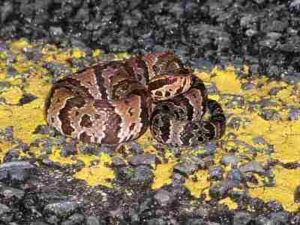
Trophic Functions of Wetland Tertiary Consumers
Tertiary consumers are often considered apex predators in the wetland food web. They occupy the highest trophic level and have few to no natural predators within their immediate environment. This advantage makes them effective as key regulators of lower trophic levels by regulating the populations of consumers on which they feed.
Through a series of energy transfers, tertiary consumers receive energy indirectly from primary producers. They obtain energy directly from the primary and secondary consumers they prey upon, which, in turn, obtain energy directly from primary consumers like plants and algae. This flow sequence of energy resources, allows the wetland ecosystem to remain functional and maintain its trophic balance.
Population control is a function of tertiary consumers, which help regulate the populations of lower wetland consumers. One notable outcome of such control is preservation of primary producer communities through the trophic cascading effect [3].
By preying on herbivorous species, overpopulation among them is prevented, which indirectly maintains the abundance of primary producers and prevents they extermination due to herbivory. This can have ripple effects across the entire ecosystem, influencing both wetland primary productivity and overall biodiversity.
Biomass resources are also regulated through the activities of tertiary consumers in wetlands. Through predation, they control the size and reproductive rates of prey organisms, preventing population explosion and its associated problems, such as excessive competition and resource depletion.
Like other biotic components of the wetland energy pyramid, tertiary consumers contribute to biodiversity by supporting the trophic structure of the wetland ecosystem. The presence of these top predators influences the distribution and adaptation of other species, and potentially leads to trends of coexistence among organisms in multiple trophic levels.
Ecological stability in the wetland ecosystem can be attributed to tertiary consumers. By controlling the abundance of herbivores and secondary consumers, they help to prevent rapid population fluctuations and maintain equilibrium between ecologic demand and supply.
Lastly, tertiary consumers efficiently transfer energy from lower trophic levels to the higher levels that they occupy. While they receive only a fraction of the energy present in their prey, this energy is utilized for sustaining their growth, reproduction, and daily activities.
Overview of Trophic Levels in the Wetlands
The trophic levels in the wetlands are mainly four in number, including level one occupied by producers, level 2 with primary consumers, levels three and four containing secondary and tertiary consumers respectively. While it is not very common, a fifth trophic level can be included for highly populated and diverse swamp ecosystems, such as some occurring in subtropical regions.
First Trophic Level (Primary Producers) is composed typically of autotrophic organisms like plants and algae that produce their own energy and biomass from renewable energy and abiotic chemical resources, through photosynthesis.
Second Trophic Level (Primary Consumers) comprises of herbivores that feed directly on the primary producers.
Third Trophic Level (Secondary Consumers) is occupied by carnivores that prey mostly on primary consumers.
Fourth Trophic Level (Tertiary Consumers) plays host to apex predators including carnivores and omnivores that feed on all lower consumers in the ecosystem.
As already stated, additional trophic levels can be included in more complex ecosystems, thereby extending the energy pyramid further beyond tertiary consumers. This however depends on the presence of other predators.
*Contribution of Decomposers to Energy Dynamics in the Wetland
Decomposers, including microbial saprophytes and macroscopic detrivores, are a vital component of the wetland ecosystem, and they are instrumental in recycling organic resources and contributing to the dynamics of the energy pyramid, so that their functions are indispensable for the overall health and sustainability of the wetland ecosystem.
Some ways in which decomposers contribute to energy dynamics in the wetland include through the breakdown of organic matter, cycling of nutrients, transfer of energy, support of autotrophs, maintenance of ecosystem health, contributions to biodiversity and habitat quality.
Primary decomposers consist of microorganisms like bacteria and fungi [7], while secondary decomposers include organisms like detritivorous insects and crustaceans. The primary function of these species is to facilitate the biodegradation of organic remains from animals and plants, as well as other organic debris that accumulates within the wetland.
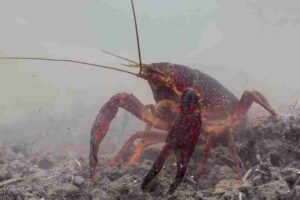
This decomposition process leads to the transformation of complex organic molecules into simpler products, with release of stored energy from polymeric chemical bonds.
Nutrient cycling is facilitated when decomposers break down organic materials and return essential nutrients like carbon, nitrogen, sulfur and phosphorus, back into the water column and sediments.
These nutrients are released as byproducts of decomposition, and become available for uptake by primary producers like algae and plants. Such recycling of nutrients is critical for the growth of primary producers and, subsequently, for the entire energy pyramid.
While decomposers do not have a traditional position of occupancy in the food web or energy pyramid, like producers, lower consumers, or apex predators, they are still an integral part of the sequence if energy transfer that occurs continuously within the wetland ecosystem.
As they break down organic materials, they release energy-rich products. This energy supports the metabolic needs of decomposers themselves, and is also released into the environment as potential energy in nutrients and detritus, or heat energy that dissipates during metabolism.
By recycling nutrients and making them available for uptake from sediments and water, wetland decomposers indirectly support the growth of autotrophs like plants and algae. These primary producers, in turn, capture energy from solar radiation through photosynthesis and convert it into organic matter, thereby initiating the energy flow among consumers.
Decomposers may help to maintain the overall health of the wetland, by preventing the accumulation of potentially-toxic organic substrates. In the absence of decomposers, waste plant and animal matter would accumulate, potentially resulting in habitat degradation, nutrient imbalances, growth of pathogens and disease spread.
Activities of decomposers therefore enhance the quality of wetland habitats. Their nutrient cycling and organic matter degradation, create enriched microenvironments that can support diverse microorganisms, further supplementing the wetland's biodiversity.
Conclusion
Wetland energy pyramid comprises of;
1. Producers
2. Primary Consumers
3. Secondary Consumers
4. Tertiary Consumers
It is also supported by the contribution of decomposers to energy dynamics.
References
1). Dehority, B. (2002). "Gastrointestinal Tracts of Herbivores, Particularly the Ruminant: Anatomy, Physiology and Microbial Digestion of Plants." Journal of Applied Animal Research 21(2):145-160. Available at: https://doi.org/10.1080/09712119.2002.9706367. (Accessed 27 September 2023).
2). Fennessy, S.; Cronk, J. (2018). "Primary Production and Respiration: Ecological Processes in Wetlands." The Wetland Book (pp.315-322). Available at: https://doi.org/10.1007/978-90-481-9659-3_67. (Accessed 27 September 2023).
3). Heath, M.; Speirs, D. C.; Steele, J. H. (2013). "Understanding patterns and processes in models of trophic cascades." Ecology Letters 17(1). Available at: https://doi.org/:10.1111/ele.12200. (Accessed 27 September 2023).
4). Marrow, P.; Law, R.; Cannings, C. (1992). "The Coevolution of Predator--Prey Interactions: ESSS and Red Queen Dynamics." The Royal Society, Proceedings of the Royal Society B 250(1328):133-141. Available at: https://doi.org/10.1098/rspb.1992.0141. (Accessed 27 September 2023).
5). Terborg, J.; Estes, J. A.; Paquet, P.C.; Ralls, K.; Boyd-Heger, D.; Miller, B.; Noss, R. (1999). "The Role of Top Carnivores in Regulating Terrestrial Ecosystems." Island Press. Available at: https://www.academia.edu/33551482/The_Role_of_Top_Carnivores_in_Regulating_Terrestrial_Ecosystems. (Accessed 27 September 2023).
6). Villacorte, L. O.; Ekowati, Y.; Neu, T.; Kleijn, M.; Winters, H.; Amy, G.; Schippers, J. C.; Kennedy, M. D. (2015). "Characterisation of algal organic matter produced by bloom-forming marine and freshwater algae." Water Research 73(1):216-230. Available at: https://doi.org/10.1016/j.watres.2015.01.028. (Accessed 27 September 2023).
7). Yarwood, S. A. (2018). "The role of wetland microorganisms in plant-litter decomposition and soil organic matter formation: a critical review." FEMS Microbiology Ecology 94(11). Available at: https://doi.org/10.1093/femsec/fiy175. (Accessed 27 September 2023).
